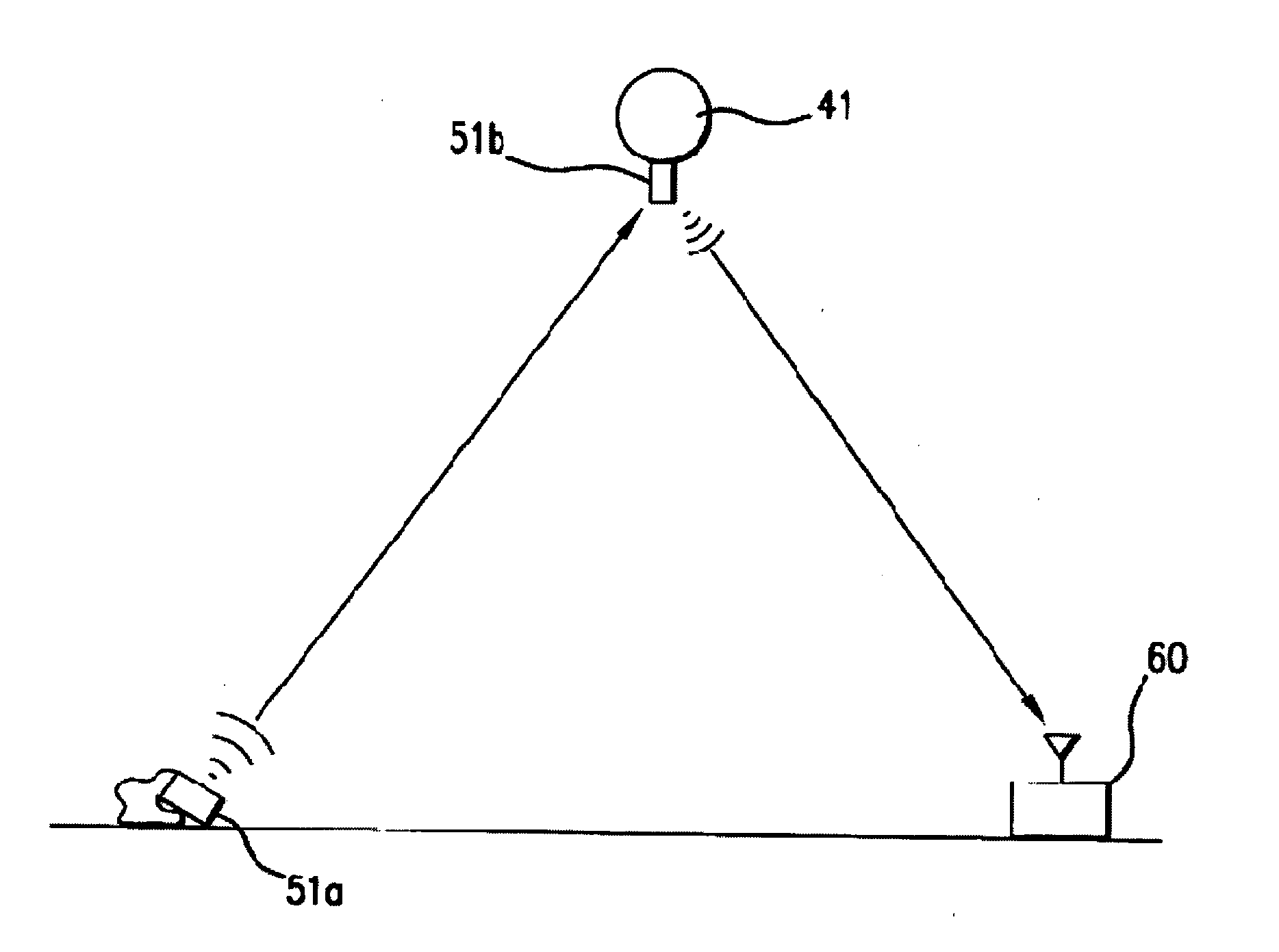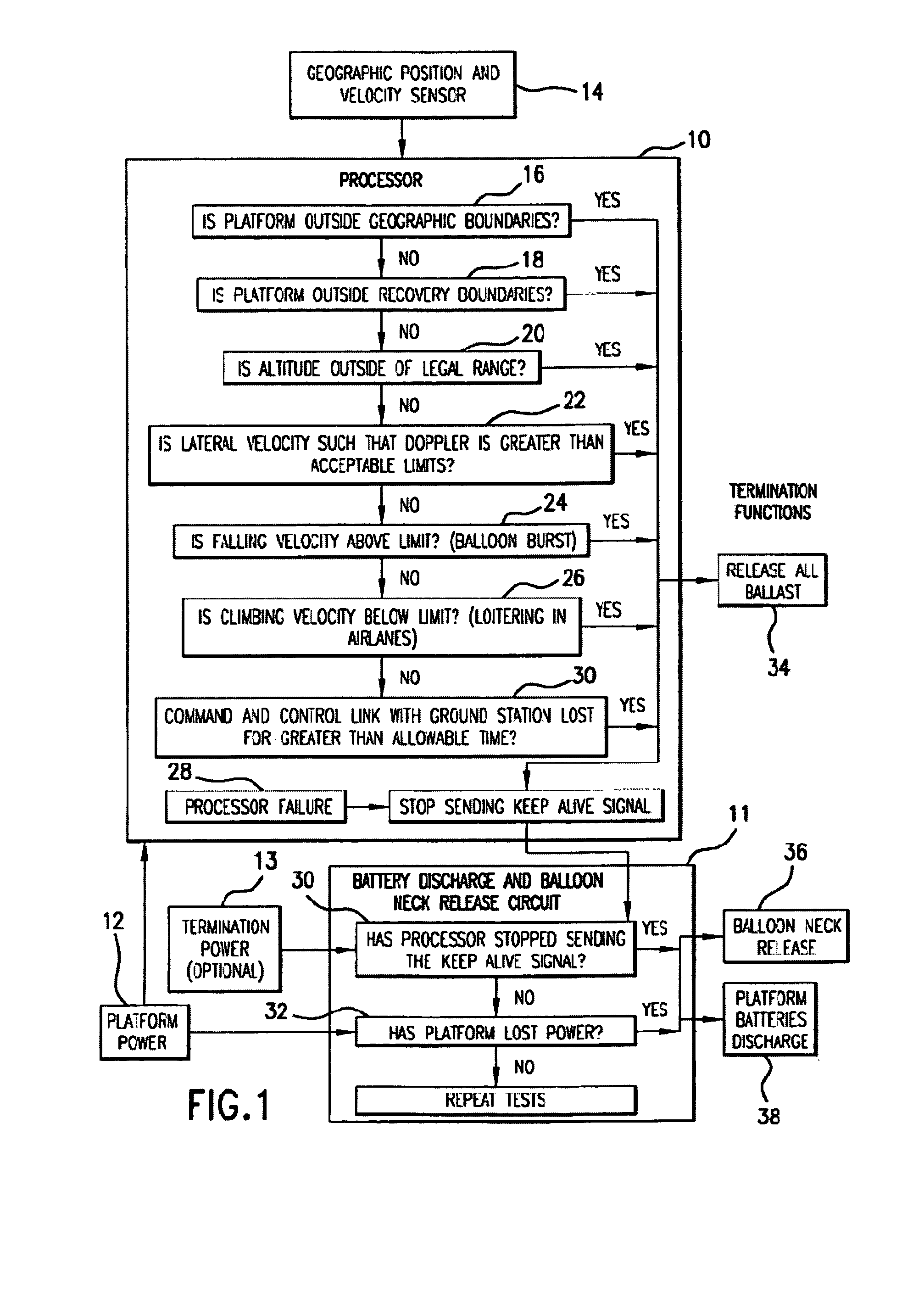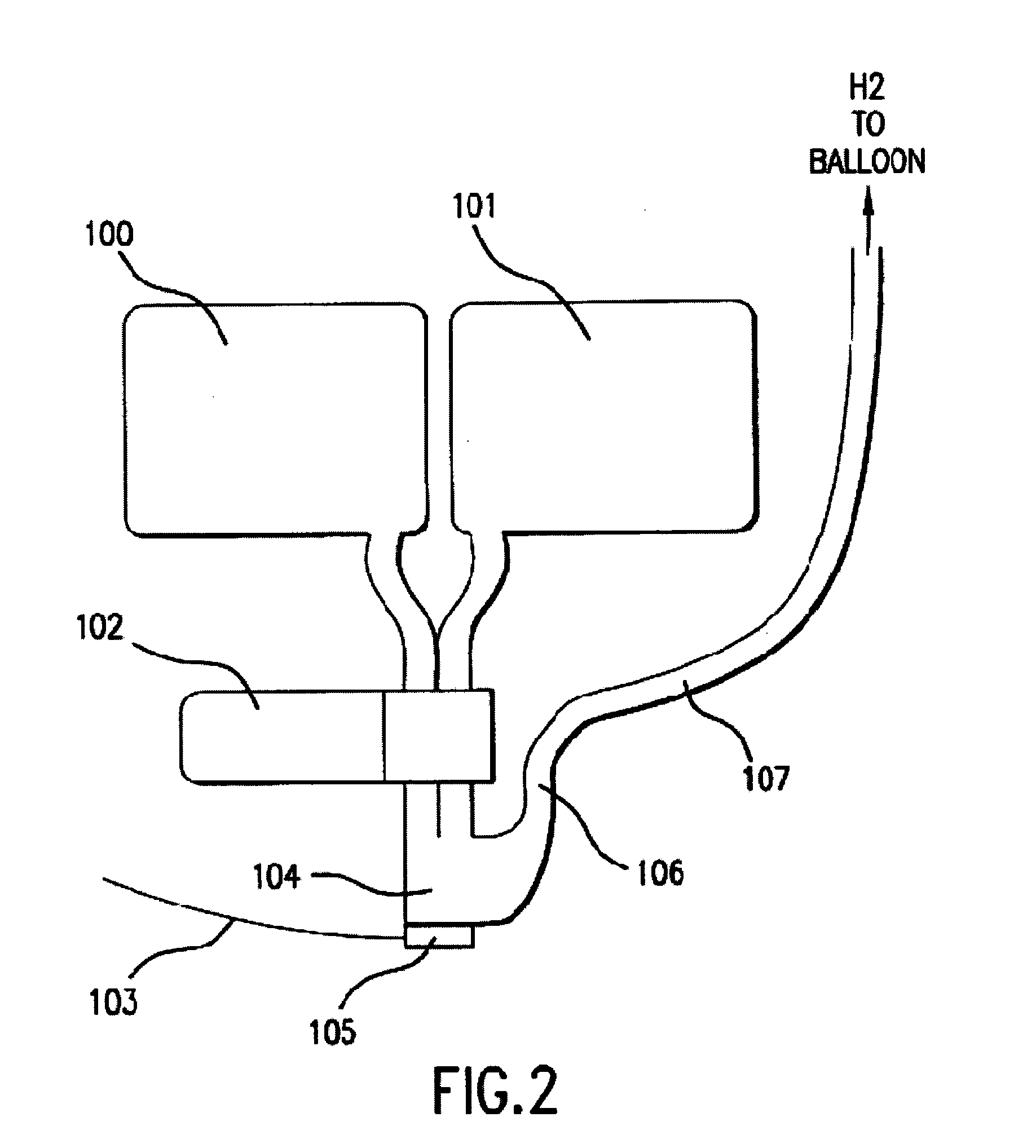Systems and applications of lighter-than-air (LTA) platforms
a technology of platform and light-weight, applied in process and machine control, wireless commuication services, etc., can solve the problems of no personal satellite, no mass producers of consumer products, and most satellites cannot be serviced or upgraded after being launched
- Summary
- Abstract
- Description
- Claims
- Application Information
AI Technical Summary
Benefits of technology
Problems solved by technology
Method used
Image
Examples
Embodiment Construction
The present invention overcomes drawbacks of prior communication satellites, by using small and relatively inexpensive microelectronics to incorporate most of the functions provided by existing communication satellites in small, lighter-than-air communications platforms. In particular, a plurality of lighter-than-air balloons is designed to carry microelectronic communication equipment into a layer of the Earth's atmosphere called the stratosphere. The weight of these platforms is approximately 100 to 1,000 times less than the micro-satellites currently launched into non-geosynchronous orbits. For convenient reference, the airborne communication platforms or balloons carrying a payload of electronic communication and control equipment have sometimes been referred to herein as “stratospheric nanosatellites” or “SNS” for short. In the metric system, the“nano” prefix signifies units 1,000 times smaller than the “micro” prefix. The SNS invention eliminates the need for a rocket to prop...
PUM
 Login to View More
Login to View More Abstract
Description
Claims
Application Information
 Login to View More
Login to View More - R&D
- Intellectual Property
- Life Sciences
- Materials
- Tech Scout
- Unparalleled Data Quality
- Higher Quality Content
- 60% Fewer Hallucinations
Browse by: Latest US Patents, China's latest patents, Technical Efficacy Thesaurus, Application Domain, Technology Topic, Popular Technical Reports.
© 2025 PatSnap. All rights reserved.Legal|Privacy policy|Modern Slavery Act Transparency Statement|Sitemap|About US| Contact US: help@patsnap.com



